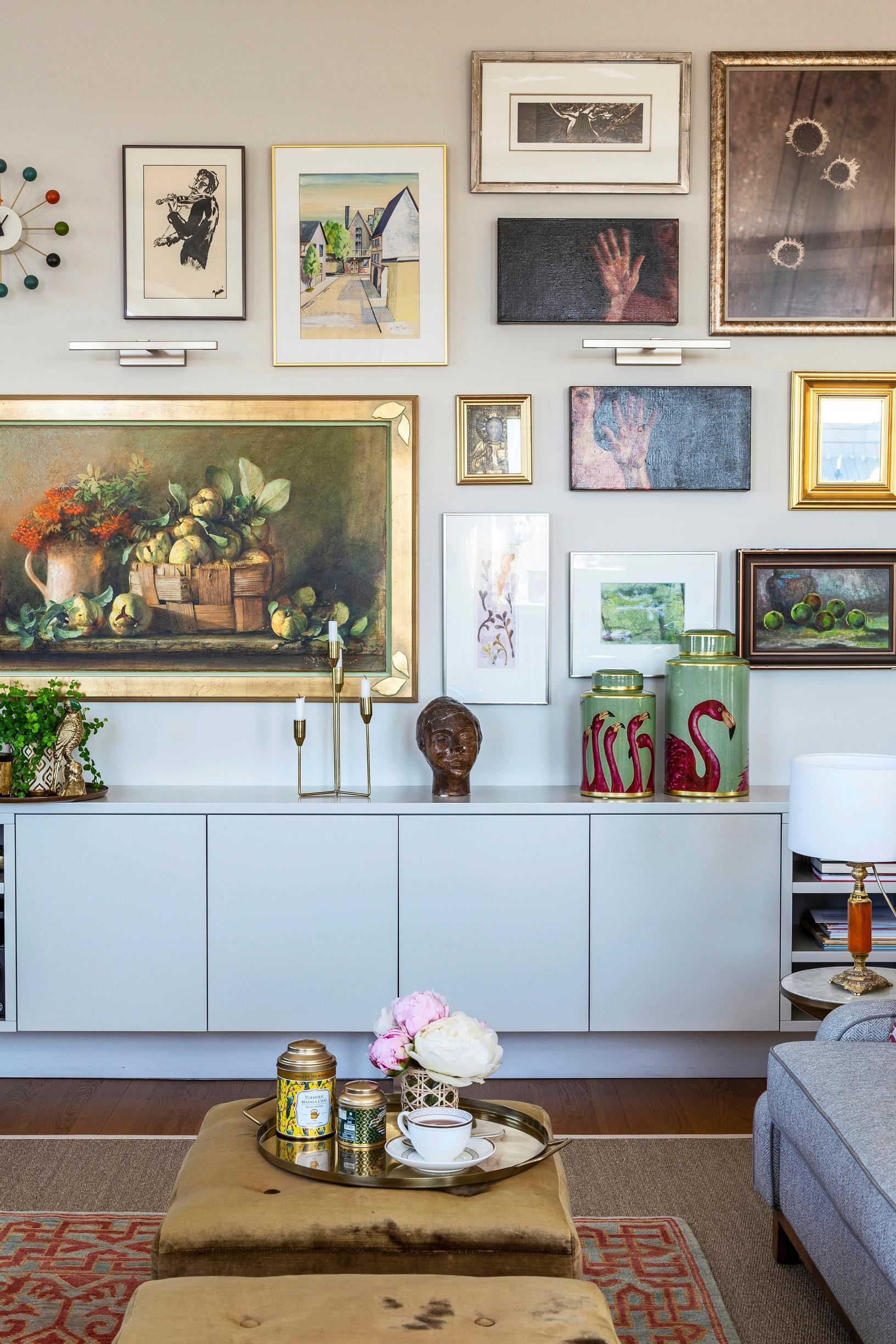
Add joy to your walls: interior designers share easy, budget-friendly art tips
How do you arrange paintings, and how much does art cost? Professionals share how to decorate with art and what kinds of finds you can discover.
“Art is a personal affair in a private home, chosen according to one’s own taste,” explains interior designer and trend expert Malla Tapio when asked for advice on decorating with art. That’s why even a professional usually doesn’t select artwork for someone else’s home on their own; at the very least, the purchase is considered together.
For many people, art isn't just part of interior design—it also brings everyday joy and sets the desired mood.
Interior architect Elina Siltanen-Sjöberg agrees:
“Art is in the eye of the beholder; there's no right or wrong. The piece is chosen because it resonates with the viewer.”
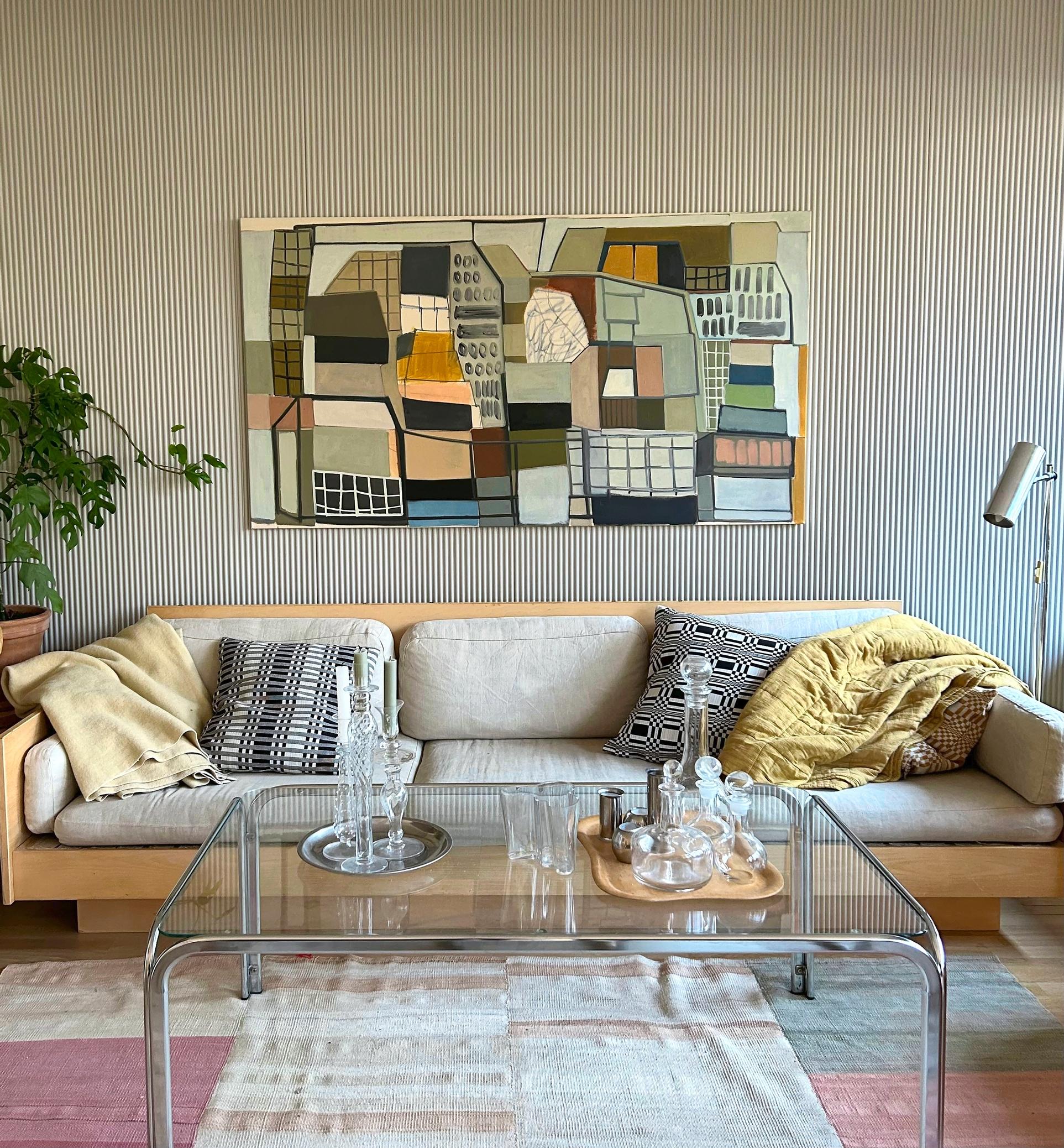
Often, clients already have beloved paintings looking for a spot after a move or renovation. One way or another, the right place can be found. Once, Siltanen-Sjöberg arranged 75 different works in one home’s dining room.
“They became a real conversation starter: the pieces reflect the residents’ lives, history, travels, and what’s most important to them.”
Art is in the eye of the beholder; there's no right or wrong.
This way, a person not only enjoys art but also reveals something personal through their choices. This is also evident in the art market, says art historian Johanna Lindfors from Hagelstam's auction:
“These days, for instance, the popularity of urban art shows how art is part of a broader lifestyle and identity. It’s not just about interior design—it’s about building a lifestyle and self-image. If a home is from a particular era, people might also want art that reflects that period.”
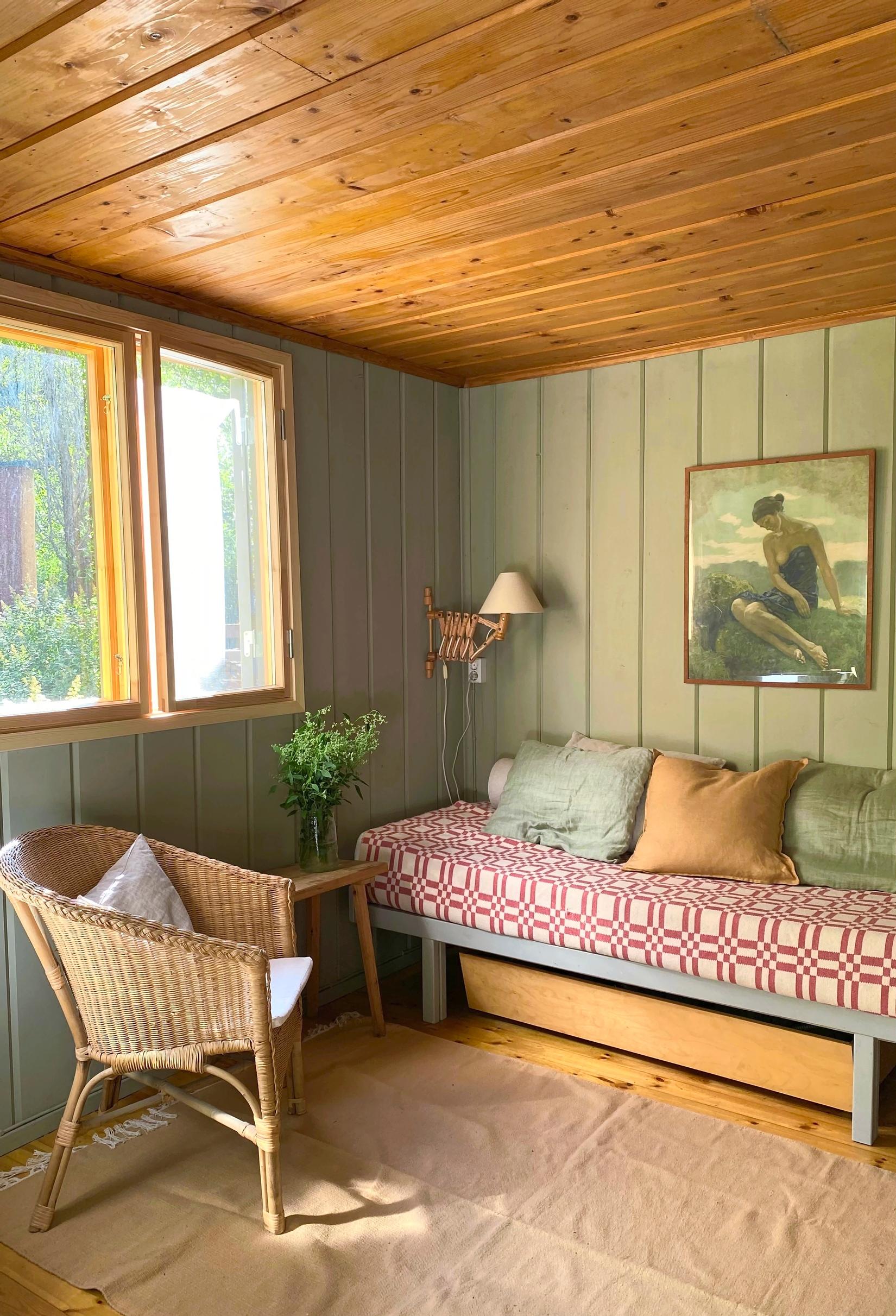
Too little and too small
Although our relationship with art is personal, interior professionals have helpful strategies for displaying art at home.
“Usually there’s too little art, and the pieces are too small,” says interior designer Anna-Kaisa Melvas, summing up a common problem in many homes.
“Art creates a cozy feel. I recommend bold, large pieces, and it’s often easiest to use posters because large-scale art can be expensive. Currently, abstract posters featuring broad brushstrokes are trending.”
Melvas appreciates the uniqueness of oil paintings but wants to broaden the idea of art in the home: a print or a rya can also work well on the wall. She has even had her children’s artwork framed.
To solve the issue of pieces being too small, group them. According to Elina Siltanen-Sjöberg, creating arrangements is a global trend.
“Gallery walls are popular: old photos, maps, prints, and paintings are mixed with an open mind.”
This grouping approach shows how trends circle back. Wall art arrangements were already a favorite in 19th-century cultured homes.
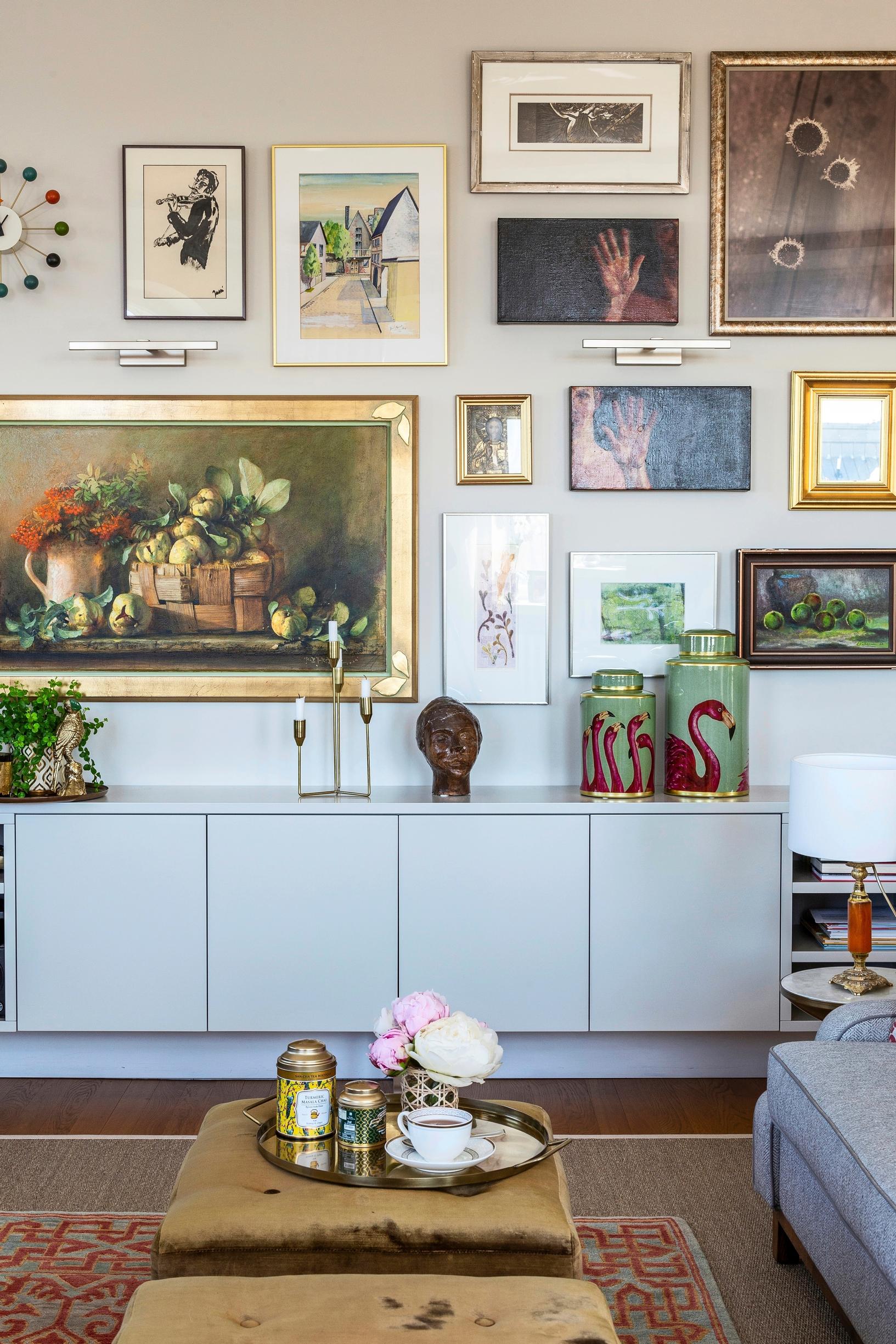
The comeback of still-life paintings
Besides grouping paintings, the subject matter itself can be a still life.
“Floral and fruit still lifes, which you couldn’t find for a long time, have come back into style. They’ve become difficult to spot at flea markets,” says Malla Tapio.
Clients also request marine views, English gardens, and botanical prints from interior designers.
“The need for beauty, nostalgia, and ornamentation grows during stressful times. At the moment, people don't want paintings that feel oppressive,” Tapio says.
The CEO of Auction House Helander, Mika Sirén notes that not all nostalgia sells, however. Lake, barn, and Lapland paintings often appear for sale, but there's little demand for them.
“Today, home decorators tend to bid on more modern, abstract works. There’s strong interest in graphic art, and the appreciation of photographic art is on the rise.”
A bold wall color accentuates a painting.
So how do you make art fit seamlessly into your interior?
“Consider your color scheme, harmony, light and shadow, or the mood the piece brings. Sometimes it’s worth being bold and trusting your instincts,” says Lindfors.
“Also, you can always build your interior around a particular piece, she adds.”
Interior designers do sometimes get such requests.
“We can design the entire interior, wall color, and lighting direction so the piece really stands out,” Tapio says.
Anna-Kaisa Melvas points out that a beige, greige, or gray wall is not ideal for showcasing art.
“A strong wall color brings out a painting, and white also works. Patterned wallpaper often doesn’t need additional artwork, though combining wallpaper with art can still look striking.”
Frames are crucial. Narrow, simple frames are in style, but even those can vary in color: white draws less attention, while wood tones warm up the wall.
Color ties it all together
Experimenting is worthwhile because playing it too safe can be uninteresting.
“If something fits the decor too perfectly, it might be dull. A bit of dissonance can make things pop. A bold, modern poster adds layers to a classic interior and deliberately breaks the harmony,” says Melvas.
In Elina Siltanen-Sjöberg’s view, different eras and styles usually work together if there’s a unifying element. Often, that element is color.
“Pick a color from an older painting and use it in the modern room’s throw pillows or lampshade,” she advises.
You can apply the same idea on a smaller scale. Malla Tapio suggests this simple arrangement:
“Place a artwork on a sideboard so it leans against the wall, and add a table lamp and vase. Include a color from the painting or its complementary color in details like flowers or candles.”
Horizontal art makes a room feel lower, while vertical pieces add height
But color alone won’t help if the overall mood doesn’t align.
“If the subject matter is intense or the brushstrokes are angry, it can break the room’s serenity,” Siltanen-Sjöberg says.
It’s not always possible to match styles. She wouldn’t necessarily combine 1960s pop art with a 19th-century landscape painting.
“They’d steal something essential from one another. Placing them in different rooms lets each piece breathe its own beauty.”
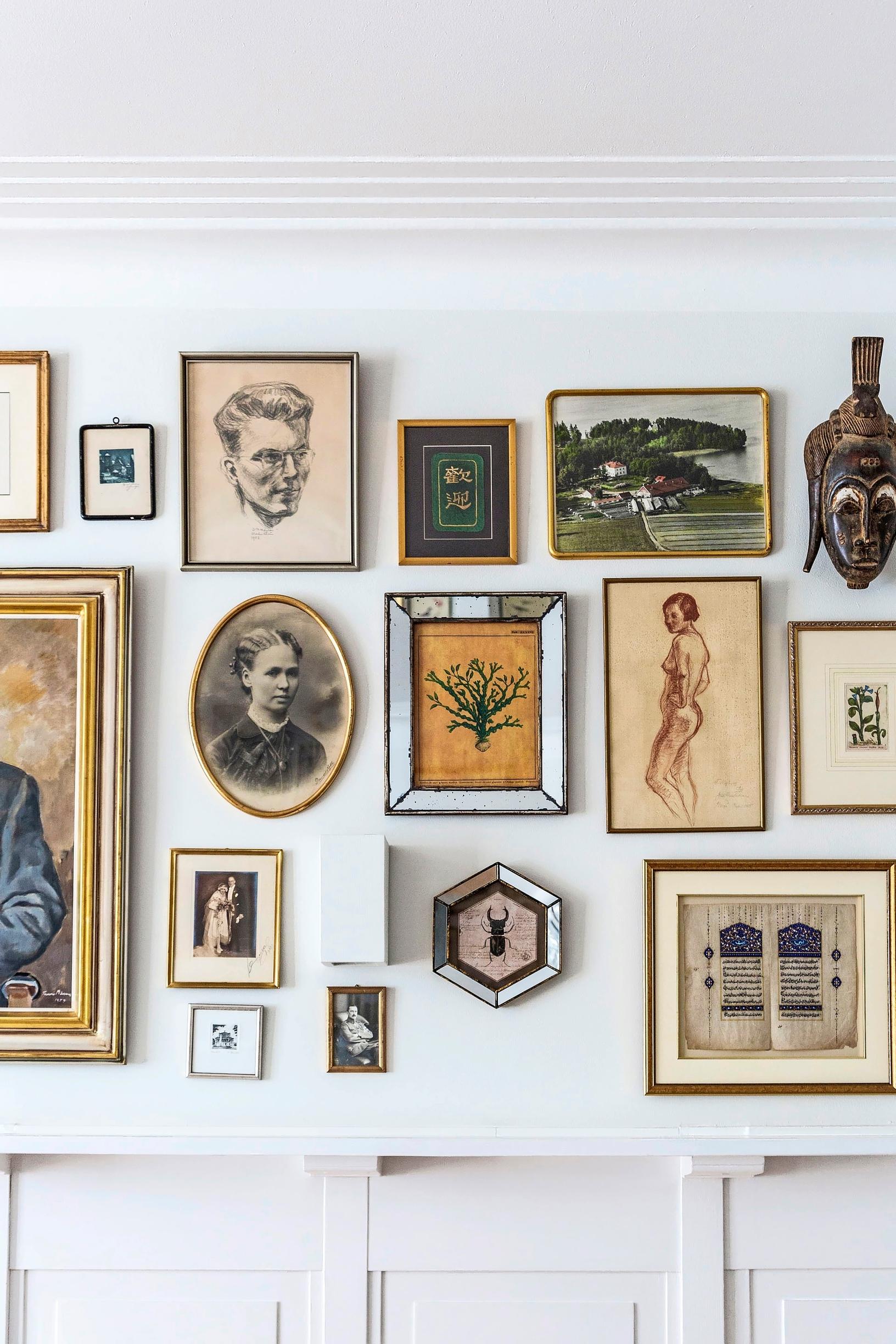
Find a surprising spot
The size and shape of your art also matter when choosing where to hang it. Horizontal art makes a room feel lower, while vertical pieces add height. According to Siltanen-Sjöberg, half or two-thirds proportions typically look good. A painting should be at least half the width of a sofa or table but noticeably narrower than the furniture.
“It’s easiest to hang a painting on a relatively narrow wall, a recessed area, or a projection,” says Melvas. Remember, a painting can also go somewhere other than over a sofa.
“Hallways or entry spaces can become wonderful galleries,” Tapio suggests.
Melvas says she often surprises clients as she roams the house deciding where each painting might live.
“You can hang art in the kitchen backsplash area, a child’s room, or the laundry room. There are often cozy alcoves in a bathroom, and unexpected art there can spark delight.”
If you can’t find the right spot, it’s perfectly fine to let a piece go. Art dealers often see that side of things.
“Some people change their art because of a move. A piece may also reflect a stage of life that’s passed,” Lindfors says.
Many hold on to inherited art in storage.
“In the end, you might realize you’ll never use them. Put them up for sale instead of throwing them away. Recycling is fantastic, and sometimes unfortunate accidents happen where money literally gets tossed out,” says Sirén.
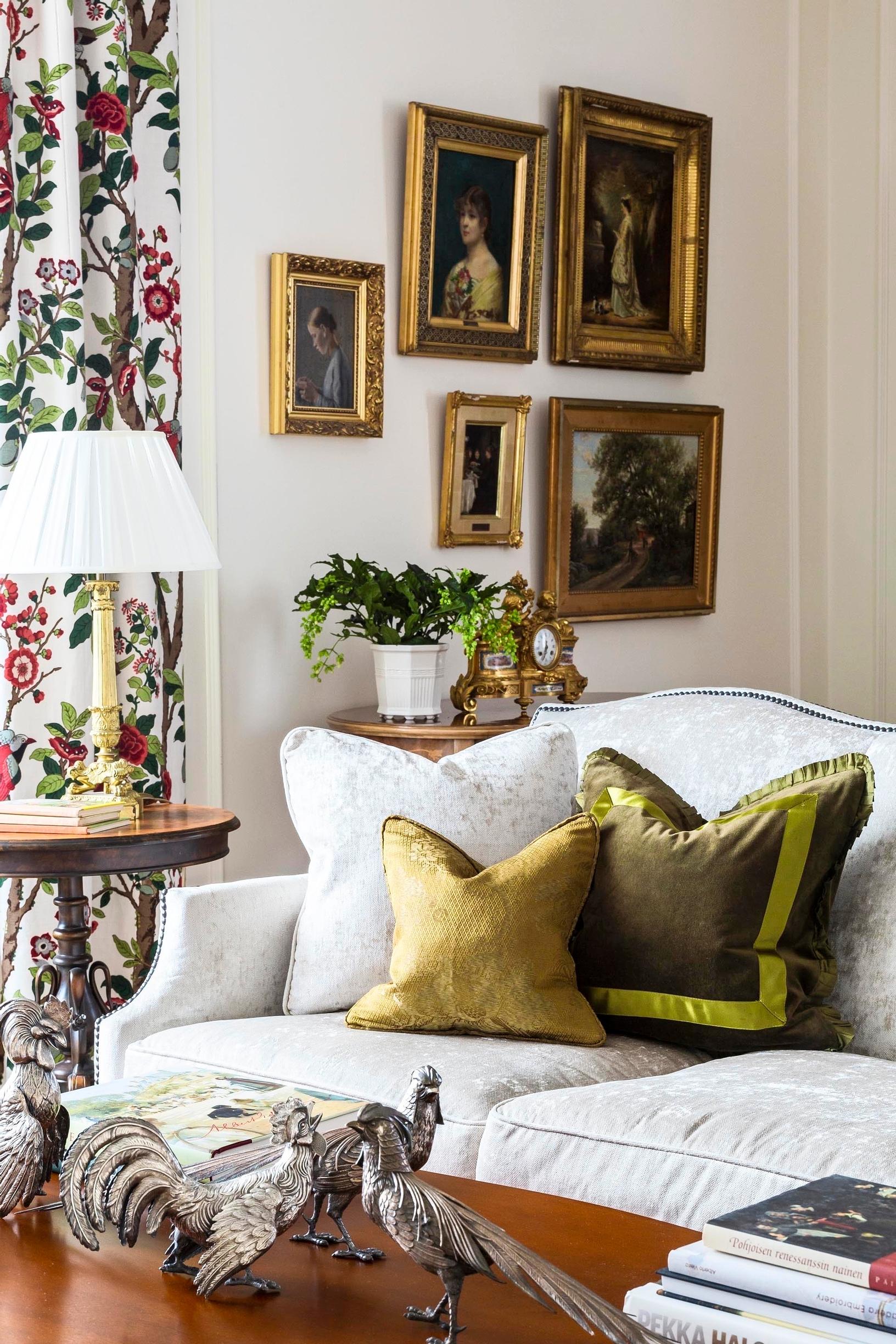
Art on the wall for a few hundred euros
If the goal isn’t an investment piece but simply to bring joy to your home, you can discover art bargains at flea markets. Auctions guarantee authenticity, but even there, prices aren’t always high.
“You can find a surprisingly wide array of work for around 100–200 euros. That could get you intriguing graphic art by emerging artists or atmospheric landscapes by lesser-known painters,” says curator Thomas Luoma from Hagelstam.
Graphic art is generally more affordable than paintings, both Luoma and Sirén note. For a few hundred euros, you can manage to buy graphic works from well-known Finnish names such as Kuutti Lavonen, Sam Vanni, Juhani Linnovaara, Tuulikki Pietilä, Ina Colliander or Lars-Gunnar Nordström.
“There’s a broad stylistic range in graphic art, from Pentti Kaskipuro’s minimalist still lifes to Kirsi Neuvonen’s vividly colorful pieces. Old masters like Louis Sparre or A.W. Finch might sell for as little as a hundred euros,” Sirén says.
Moving on to paintings, Luoma notes that you can find various options under 1,000 euros, such as pieces by the November group’s Jalmari Ruokokoski and Tyko Sallinen, or 18th–19th-century Central European landscapes.
“For 1,000–2,000 euros, you can find quality modern art, such as paintings by Ernst Mether-Borgström or Kristian Krokfors, along with classic names like Venny Soldan-Brofeldt, or even small works or sketches by the Golden Age masters from the late 1800s and early 1900s,” Luoma explains.
This article was originally published in Avotakka 5/2023.


